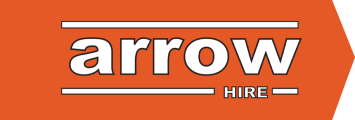Are Temporary Permanent Fences And Barriers K-Rated?
Most temporary permanent fences and gates are all K-rated. But what is fence or barrier K-rating? Well, it is a crash test that is done on fences, bollards, barriers or gates by authorized certifying bodies. It indicates a perpendicular impact penetration of vehicles of specified weight at specific speeds. It measures the exact stopping power of barriers or fences in relation to the speed and weight of incoming vehicles or other appropriate moving projectiles. The K-rating vehicle weight is standardized at 15 000 lbs. Standard barriers only allow trucks to penetrate no more than 36” past the bed. In a summary, here are these K-rating codes at a glance:
• K4 rating: For vehicles travelling at 30mph
• K8 rating: For vehicles travelling at 40mph
• K12 rating: For vehicles travelling at 50mph
The above listed test K-ratings have been used to issue contracts since the year 2000.
Where are K-rated temporary products and fences used?
K-rated or crash rated materials, fences included are normally used in varied industrial, government and commercial applications. They are also used in high security or profile private estates and residences. Fuel depots, military installations, government properties, power plants, chemical plants, etc, are some of the places that boast of these types of fences or barriers. Perimeter gates and fences whether permanent or temporary achieve their K-rating through addition of beam or cable reinforcements.
Heavily used barriers for example wedge barriers, pop up bollards, drop arm barriers and capture barriers achieve their k-rating as a general rule through enhanced foundations and materials. For instance, a project might use heavier gauge steel fences that are anchored deep into reinforced concrete footings. All the same, regardless of the chosen barrier or fence type, the K-rating is the standard measure which is used in anti-terrorism crash barrier protection. These ratings today are all covered by the society of testing and materials in our country and others such as the U.S.
Are K-rated fences necessary?

Due to today’s security challenges, K-rated fencing materials are crucial in all ongoing construction projects. These barriers or fences don’t have to be fortress style designed. The usage of natural barriers, enhanced entrance designs, decorative products and the likes allow security to be achieved while offering a more aesthetically all natural look. There are many government properties and military installations that boast of these fences around the country.
Who will incur the K-rating fence and barrier expenses?
Anti-ram fences and barriers whether of temporary or permanent nature go through extensive testing before they are K-rated certified. This testing expense is solely incurred by the producer. However, this cost is included in the pricing of the final product, meaning that it is passed on to the consumers. As a result, these types of fences and barriers can be quite expensive. Development costs that are passed on to the consumers are relatively higher due to the considerable foundation that is required to achieve a specific K rating.
Note that not all military installations or government properties, or even construction sites require K rated products or systems. Having barrier or fencing specification indicating a K-rating requirement implies that a high level of security is needed for a specific area.
For your peace of mind, it is crucial to know what barrier or fencing product K rating is and why it is required for a specified project. All the above stated ratings, (K4, K8, K12), are all rated to anti-ram protection which is related to weight, speed and vehicle penetration as dictated by the relevant state certifying body. The requirements for K-rated fences and barriers continue to grow with every new terrorism incident within the country and around the world. This means that the demand for products with increased capabilities is expected to continue to grow as new global occurrences unfold.
K-rated fences and barrier styles
Anti-ram temporary permanent fences and barriers are designed and engineered to meet specific construction or security specialist need. The need for value added security fences that can delay forced entry for enough duration to let or bring a secondary security measure into play is important than ever before. All these fences come with electrostatic powder coated surface to ensure their appearance remain aesthetically pleasing for many years to come. They are available in varying styles with the commonest being outwardly curved, blunt-tipped and triple-pointed. The standard colors for these products are black, desert sand, bronze and white.
All in all, these fencing systems offer the most relevant answer to physical security and crowd holding demands. Tests have shown that adding extra features to an existing chain link fence greatly restricts potential vehicle penetration. Furthermore their base design is configured for accessorizing with additional holding or anti-ram barrier capabilities. For example, the user can opt to have extra features such as anti-climbing, alarm and sensor systems installed to the fence or barrier so as to enhance security.

